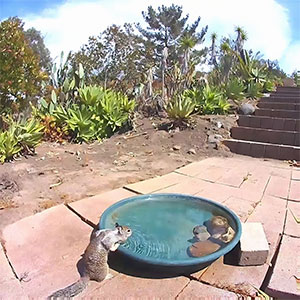Deadly Oversights: 48 Critical Errors First Responders Urge EMTs and Civilians to Avoid
Patient information is also important. “Have the patient’s medical information ready, including Do Not Resuscitate paperwork, medical history, medications, and allergies,” the expert continued. “This speeds up care and helps with decision-making.”
Finally, David says, “Keep a ‘File of Life’ form with current contact and health care information on your fridge. Know where medications are located for quick access during emergencies.”
 If you don’t know what to do…please don’t try to ‘help’. You’re going to cause more confusion and/or delay. Getting out of the way is going to help a lot more.
If you don’t know what to do…please don’t try to ‘help’. You’re going to cause more confusion and/or delay. Getting out of the way is going to help a lot more.
 I’ve spent eight years in rural rescue. Keep an eye on your kids when you’re out in nature. Look away for a second or two, and the next time you see them may be in a coffin.
I’ve spent eight years in rural rescue. Keep an eye on your kids when you’re out in nature. Look away for a second or two, and the next time you see them may be in a coffin.
“In such cases, Emergency Medical Services (EMS) will have the patient sign a ‘refusal’ form, allowing them to seek care on their own,” David continued. “However, if a patient is unconscious, has a severe injury, or is unable to communicate due to their condition, consent for treatment and transport is implied, since a reasonable person would acknowledge that treatment is necessary.”
 Old cars are death traps. Burnouts are fun and all, but if it catches unexpectedly, you may be the crumple zone.
Old cars are death traps. Burnouts are fun and all, but if it catches unexpectedly, you may be the crumple zone.
 Going into the water to save another person without appropriate kit and training, seriously, just NO, do not do it, doesn’t much matter how strong a swimmer you think you are!
Going into the water to save another person without appropriate kit and training, seriously, just NO, do not do it, doesn’t much matter how strong a swimmer you think you are!
Three bodies instead of one is not an uncommon outcome here, and three bodies, the first of them a dog is not at all unheard of.
The inshore lifeboat coxswain knows the tidal flows, knows where the hidden hazards are and drills for this s**t, and that crew are also (critical) used to pulling panicking people out of the sea, they know how to do it in such a way as the rescue does not end up with the rescuee grabbing on in a way that prevents anyone actually managing to swim.
Oh on the subject of water, a foot of fast flowing water will easily carry a big car away, don’t try it.
 Running to pull someone out of burning vehicle is a great way to risk losing your life or causing serious injury to yourself. It is so unbelievably important to let the proper personnel deal with each situation and NOT risk causing more casualties.
Running to pull someone out of burning vehicle is a great way to risk losing your life or causing serious injury to yourself. It is so unbelievably important to let the proper personnel deal with each situation and NOT risk causing more casualties.
 I know these points are made a lot, but don’t drink and drive. Don’t get high and drive. Don’t text and drive. It is repeated over and over but yet we constantly see accidents and fatalities because of this. It is so easy to avoid. If you are drinking or using d***s, have a sober driver/taxi/Uber drive you, or stay at your home. If you need to text, like it is a true emergency, find a safe place to pull over and park to send the message, otherwise just wait.
I know these points are made a lot, but don’t drink and drive. Don’t get high and drive. Don’t text and drive. It is repeated over and over but yet we constantly see accidents and fatalities because of this. It is so easy to avoid. If you are drinking or using d***s, have a sober driver/taxi/Uber drive you, or stay at your home. If you need to text, like it is a true emergency, find a safe place to pull over and park to send the message, otherwise just wait.
 If you get distracted while driving and your tires go over the side of the road, don’t freak out and whip the wheel to get back on. You’ll over correct and go across, likely into a tree on the other side. Or another driver head on. Had a girl recently do this and while she died instantly, her parents were just in front of her and her dad got second and third degree burns trying to get her body out if the wreckage.
If you get distracted while driving and your tires go over the side of the road, don’t freak out and whip the wheel to get back on. You’ll over correct and go across, likely into a tree on the other side. Or another driver head on. Had a girl recently do this and while she died instantly, her parents were just in front of her and her dad got second and third degree burns trying to get her body out if the wreckage.
To the point, gradually get back on the road, and if impossible, out hazards on, come to a stop, then rejoin the road when safe.
 Fire extinguishers are great to have. They work great for what they are intended to do. But if your house is on fire, and the fire extinguisher doesn’t put it out immediately, get out of there and call 911 from a safe place. We have more, bigger, and better fire extinguishers…and hoses…with engines that have big water tanks
Fire extinguishers are great to have. They work great for what they are intended to do. But if your house is on fire, and the fire extinguisher doesn’t put it out immediately, get out of there and call 911 from a safe place. We have more, bigger, and better fire extinguishers…and hoses…with engines that have big water tanks



















